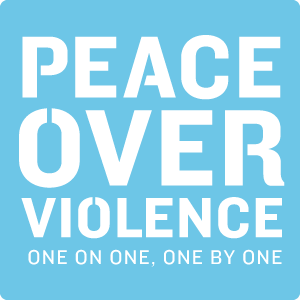Teen Dating Violence
In the past, relationship violence was looked upon as an adult problem; but in recent years, teens have begun to speak out, describing the same continuum of violence in their lives – sexual harassment, assault, physical abuse.
The types and extent of abuse that occur in teen relationships is comparable to that of adult intimate partner violence. Relationship violence between adolescents, teens, and young adults is as extensive and as dangerous as violence between adult partners. Children who grow up in violent homes and adopt the characteristics of their role models become aggressive outside the home and are further supported by the overwhelming amount of violence in our culture – in the media, on the streets – which makes it difficult to break out of the pattern. Simultaneously, violence and trauma inside the home destroys a child’s personal power, increasing the likelihood of his or her becoming victimized by a violent partner.
“A pattern of behavior in which one person (a teen or adult) uses intimidation, threats of or actual physical, emotional or sexual violence in order to maintain power and control over his or her partner (a teen).”
Warning Signs & Red Flags
Jealousy
Controlling Behavior
Quick Involvement
Unrealistic Expectations and Dependencies
Isolation
Blaming
Hypersensitivity
Cruelty to Animals
‘Playful’ Use of Force During Sex
Abrupt Mood Changes
History of Violence
Threats
Breaking or Throwing Objects or “House Battering”
Any Force During an Argument
Danger Signals
- Your partner is possessive, extremely jealous and calls to check up on you several times a day.
- Your partner seems to lack their own interests and goals and is overly dependent on the relationship, insisting on becoming more and more involved. They may even follow you around.
- Your partner discourages your outside interests and friendships, and attempts to isolate you from family and friends.
- Your partner decides what you will do and when-- needing total control.
- Your partner has poor communication skills and refuses, or is unable, to settle differences with words.
- Your partner’s violence increases with the use of alcohol and drugs.
What a healthy relationship really looks like
A healthy relationship is one in which
Individuals respect each other completely.
Individuals give, receive, and compromise in equal parts.
Individuals value one another and allow each other to be him or herself without trying to change that individual.
Individuals support and encourage one another’s goals and ambitions.
Individuals trust each other and learn to recognize jealous or controlling feelings so that they can work with these feelings in a healthy manner
Neither individual is afraid of the other.
Individuals communicate openly and honestly, and both parties feel safe in expressing themselves.
Individuals share responsibility in decision-making.
Individuals encourage each other to have friends and activities outside of the relationship.
Individuals are free to be themselves within the relationship.
Components of Healthy Relationships
Communication
Compromise
Commitment
Compatibility
Consideration (Respect)
Conduct
RELATIONSHIP BILL OF RIGHTS
Relationship Bill of Rights
I have the right to be treated in a way that makes me feel safe and respected
I have the right to say NO and not feel guilty
I have the right to change my mind
I have the right to express my feelings as long as I am not violating others in the process
I have the right to be independent and have interests and friends outside of my relationship
MYTHS & REALITIES
MYTH: Teens do not experience domestic violence.
“Nearly 1.5 million high school students nationwide experience physical abuse from a dating partner in a single year”
MYTH: Teen dating violence is rare.
“One in 10 high school students has been purposefully hit, slapped or physically hurt by a boyfriend or girlfriend”
MYTH: Teen dating is not serious. It is kids being kids
“The severity of intimate partner violence is often greater in cases where the pattern of abuse was established in adolescence”
All statistics provided by loveisrespect.org

